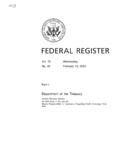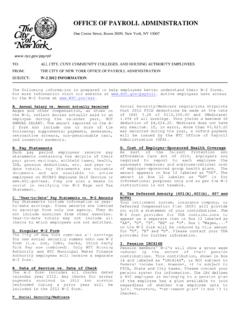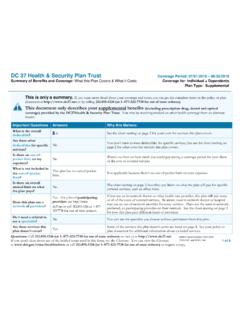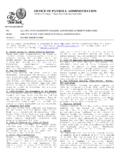Transcription of I. PURPOSE AND OVERVIEW - Internal Revenue …
1 Determining Full-Time Employees for Purposes of Shared Responsibility for Employers Regarding health Coverage ( 4980H) Notice 2012-58 I. PURPOSE AND OVERVIEW This notice describes safe harbor methods that employers may use (but are not required to use) to determine which employees are treated as full-time employees for purposes of the shared employer responsibility provisions of 4980H of the Internal Revenue Code (Code). Specifically, the administrative guidance in this notice, modifying and expanding on previous guidance, includes a safe harbor method that employers may apply to specified newly-hired employees. As described more fully below, this notice Expands the safe harbor method described in a previous notice to provide employers the option to use a look-back measurement period of up to 12 months to determine whether new variable hour employees or seasonal employees are full-time employees, without being subject to a payment under 4980H for this period with respect to those employees.
2 An employee is a variable hour employee if, based on the facts and circumstances at the date the employee begins providing services to the employer (the start date), it cannot be determined that the employee is reasonably expected to work on average at least 30 hours per week. (The 30 hours per week average reflects the statutory definition of full-time employee in 4980H(c)(4) and is the definition of full-time employee as used in this notice.) Seasonal employee is defined in section , below. Provides employers the option to use specified administrative periods (in conjunction with specified measurement periods) for ongoing employees (as defined in section , below) and certain newly hired employees; Facilitates a transition for new employees from the determination method the employer chooses to use for them to the determination method the employer chooses to use for ongoing employees; and Provides employers reliance, at least through the end of 2014, on the guidance contained in this notice and on the following approaches described in prior notices: (1) for ongoing employees, an employer will be permitted to use measurement and stability periods of up to 12 months.
3 (2) for new employees who are reasonably expected to work full-time, an employer that maintains a group health plan that meets certain requirements 2will not be subject to an assessable payment under 4980H for failing to offer coverage to the employee for the initial three months of employment; and (3) for all employees, an employer will not be subject to an assessable payment under 4980H(b) for an employee if the coverage offered to that employee was affordable based on the employee s Form W-2 wages reported in Box 1 (often referred to as the affordability safe harbor). This guidance is intended to encourage employers to continue providing and potentially to expand group health plan coverage for their employees by permitting employers to adopt reasonable procedures to determine which employees are full-time employees without becoming liable for a payment under 4980H, to protect employees from unnecessary cost, confusion, and disruption of coverage, and to minimize administrative burdens on the Affordable Insurance Exchanges (Exchanges).
4 Simultaneously with the issuance of this notice, the Department of the Treasury, the Department of Labor (DOL), and the Department of health and Human Services (HHS) (the Departments) are jointly providing administrative guidance under 2708 of the Public health Service Act (PHS Act).1 PHS Act 2708 applies to group health plans and group health insurance issuers and provides that any waiting period under a group health plan must not exceed 90 days. To clarify how the PHS Act 2708 90-day waiting period limitation coordinates with 4980H, this notice applies portions of the Departments separate and simultaneous PHS Act 2708 guidance. DOL and HHS concur in the application of PHS Act 2708 in this notice. This notice consists of a background section briefly summarizing the 4980H and PHS Act 2708 statutory framework and the administrative guidance issued to date (section II); a description of the safe harbors available for employers for determining full-time employee status in the case of ongoing employees and newly-hired variable hour and seasonal employees (including the transition from newly-hired to ongoing employees and a series of examples illustrating how the safe harbors apply) (section III); a description of the reliance provided to employers through at least 2014 (section IV); and a request for comments (section V).
5 II. BACKGROUND A. Section 4980H Section 4980H was added to the Code by 1513 of the Patient Protection and Affordable Care Act (Affordable Care Act) (enacted March 23, 2010, Pub. L. No. 111-148) and amended by 1003 of the health Care and Education Reconciliation Act of 1 Notice 2012-59, DOL Technical Release 2012-02 and HHS Bulletin titled Guidance on 90-Day Waiting Period Limitation under Public health Service Act 2708. 32010 (enacted March 30, 2010, Pub. L. No. 111-152).2 Section 4980H applies to applicable large employers (generally, employers who employed at least 50 full-time employees, including full-time equivalent employees, on business days during the preceding calendar year). Generally, 4980H provides that an applicable large employer is subject to an assessable payment if either (1) the employer fails to offer to its full-time employees (and their dependents) the opportunity to enroll in minimum essential coverage3 under an eligible employer-sponsored plan and any full-time employee is certified to receive a premium tax credit or cost-sharing reduction ( 4980H(a)), or (2) the employer offers its full-time employees (and their dependents) the opportunity to enroll in minimum essential coverage and one or more full-time employees is certified to receive a premium tax credit or cost-sharing reduction (generally because the employer s coverage either is not affordable within the meaning of 36B(c)(2)(C)(i) or does not provide minimum value within the meaning of 36B(c)(2)(C)(ii)) ( 4980H(b)).
6 Under 36B(c)(2)(C)(i), coverage under an employer-sponsored plan is affordable to a particular employee if the employee s required contribution (within the meaning of 5000A(e)(1)(B)) to the plan does not exceed percent of the employee s household income for the taxable year. Section 4980H(c)(4) provides that a full-time employee with respect to any month is an employee who is employed on average at least 30 hours of service per B. PHS Act Section 2708 PHS Act 27085 provides that, for plan years beginning on or after January 1, 2014, a group health plan or group health insurance issuer shall not apply any waiting period that exceeds 90 days. PHS Act 2704(b)(4), ERISA 701(b)(4), and Code 9801(b)(4) define a waiting period to be the period that must pass with respect to an individual before the individual is eligible to be covered for benefits under the terms of 2 Section 4980H was further amended by section 1858(b)(4) of the Department of Defense and Full-Year Continuing Appropriations Act, 2011 (enacted April 15, 2011, Pub.)
7 L. No. 112-10), effective for months beginning after December 31, 2013. 3 Minimum essential coverage is defined in 5000A(f) of the Code. The definition of eligible employer-sponsored plan in 5000A(f)(2) applies for purposes of 4980H. 4 For this PURPOSE , proposed regulations are expected to provide (as stated in Notice 2011-36) that 130 hours of service in a calendar month would be treated as the monthly equivalent of 30 hours of service per week. 5 The Affordable Care Act adds section 715(a)(1) to the Employee Retirement Income Security Act (ERISA) and section 9815(a)(1) to the Code to incorporate the provisions of part A of title XXVII of the PHS Act into ERISA and the Code, and to make them applicable to group health plans and health insurance issuers providing health insurance coverage in connection with group health plans. The PHS Act sections incorporated by these references are sections 2701 through 2728.
8 Accordingly, PHS Act 2708 is subject to shared interpretive jurisdiction by DOL, HHS, and Treasury. 4the plan. In 2004 regulations,6 the Departments defined a waiting period to mean the period that must pass before coverage for an employee or dependent who is otherwise eligible to enroll under the terms of a group health plan can become effective. C. Notice 2011-36 Public comments were requested and received on a number of issues and potential approaches to interpreting and applying 4980H and PHS Act 2708. In particular, Notice 2011-36 (2011-21 792) described and requested comments on a possible approach that would permit employers to use an optional look-back/stability period safe harbor to determine whether ongoing (rather than newly-hired) employees are full-time employees for purposes of 4980H. The use of this safe harbor approach would be voluntary. Under the look-back/stability period safe harbor method, an employer would determine each employee s full-time status by looking back at a defined period of not less than three but not more than 12 consecutive calendar months, as chosen by the employer (the measurement period), to determine whether during the measurement period the employee averaged at least 30 hours of service per week.
9 If the employee were determined to be a full-time employee during the measurement period, then the employee would be treated as a full-time employee during a subsequent stability period, regardless of the employee s number of hours of service during the stability period, so long as he or she remained an employee. For an employee determined to be a full-time employee during the measurement period, the stability period would be a period of at least six consecutive calendar months that follows the measurement period and is no shorter in duration than the measurement period. If the employee were determined not to be a full-time employee during the measurement period, the employer would be permitted to treat the employee as not a full-time employee during a stability period that followed the measurement period, but the stability period could not exceed the measurement period. Comments on this approach were favorable.
10 D. Notice 2011-73 In Notice 2011-73 (2011-40 474), Treasury and the IRS described a safe harbor under which employers would not be subject to an assessable payment under 4980H(b) with respect to an employee if the coverage offered to that employee was affordable based on the employee s Form W-2 wages (as reported in Box 1) instead of household income. Under the safe harbor, an employer would not be subject to a penalty under 4980H(b) with respect to an employee if the required contribution for that employee was no more than percent of the employee s Form W-2 wages. The proposed affordability safe harbor would apply only for purposes of determining whether an employer is subject to the assessable payment under 4980H(b). For example, the 6 26 CFR (a)(3)(iii), 29 CFR (a)(3)(iii), 45 CFR (a)(3)(iii). 5safe harbor would not affect an employee s eligibility for a premium tax credit under 36B.










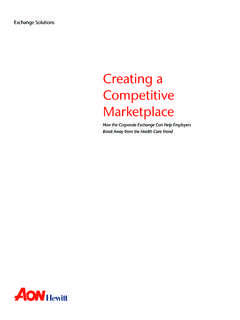

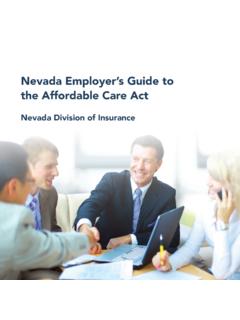
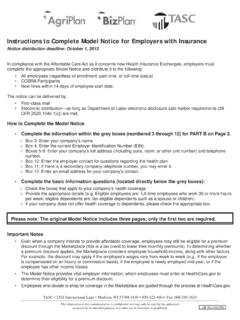
![[4830-01-p] DEPARTMENT OF THE TREASURY …](/cache/preview/6/5/b/9/7/a/d/5/thumb-65b97ad51eb0fa6035789892393b945e.jpg)
